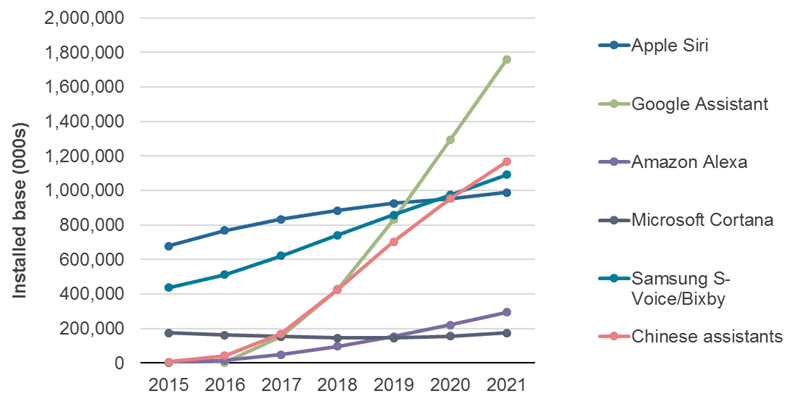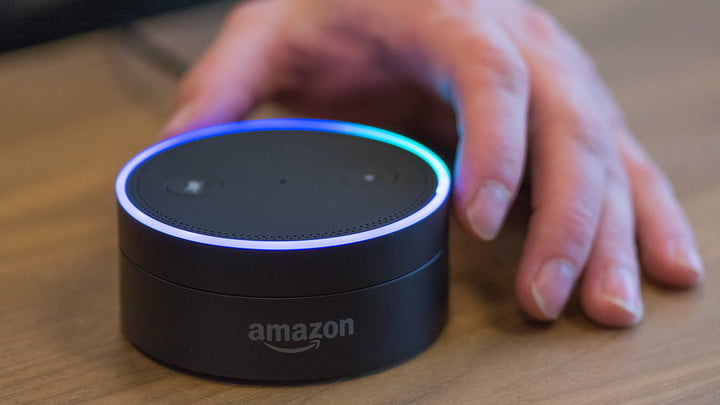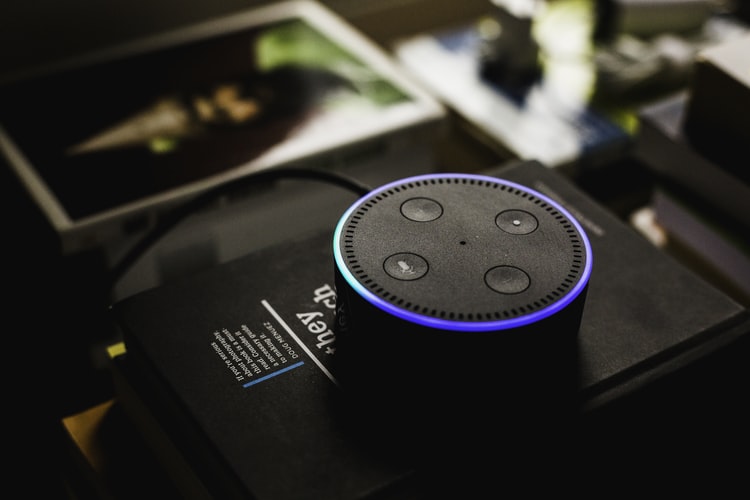As the battle between voice-enabled virtual assistants intensifies, and Amazon maintains a firm grip in the voice market – $10 billion in revenue by 2020 forecasted by RBC Capital Markets, this means that Google Home and its ilk have a lot of catching up to do. Last year, Amazon revealed that the number of Alexa skills on its platform has grown to 25,000.
When it comes to vendor implementations, CES shows are packed with hardware vendors, leading appliance manufacturers, medical equipment vendors unveiling their Alexa voice controlled line of appliances and devices – new age refrigerators, washing machines and entertainment systems such as speakers. By leveraging Amazon’s systems to build voice-enabled control capabilities and AI-backed intelligence into their devices, companies that lack in-house experts are able to bake AI into their products.
IBM trains the sight on B2B market
While Amazon Alexa is dominating the B2C market, IBM Watson is scripting its own success by making inroads into the B2B market and closing the gap with Amazon & Google. Instead of entering a crowded smart home market, so what IBM has done is not pinned it to any category but is licensing out the technology to the current business partners by integrating it into their own products and services. Further, the end motive is to integrate Watson Assistant into of artificial intelligence or machine learning applications.
While forecasts and predictions tilt in Amazon’s favour that dominates the Voice-as-the-next-interface with its line of speaker – IBM quietly created an assistant with advanced conversational skills and can be pre-trained on content and actions specific to corporate customers. IBM global vice president of Internet of Things, Bret Greenstein told AFR that Watson Assistant had already been pre-trained for usage in the automotive and hospitality industries and the company provides a customizable framework for building AI consumer applications for other sectors as well.
Here’s how Watson Assistant, deployed across banking, healthcare & automotive sector scores a lead over other assistants
- IBM’s Watson Assistant is not available as a stand-alone hardware device and is based in the cloud unlike Amazon’s Alexa & Google Home that are available in the market. It is also positioned as an enterprise AI assistant used to reinforce brand value and loyalty
- IBM doesn’t control the user data, the data is owned by the customer and it is also only shared between the corporation and the individual. This is an important factor given how data ownership will play a crucial role in the future
- Unlike other voice assistants, Watson Assistant initiates conversations with users at the right time and place, not just respond to individual commands.
- Watson Assistant can also automate some actions based on real-time events without being prompted and it gains knowledge from previous exchanges
- IBM Watson is vertical focused and its Watson Assistant follows the same marketing strategy. So while Alexa & Google Home are winning the smart home market, Watson Assistant is primed for vertical industries and has robust use cases in hospitality, automotive, banking, healthcare & energy sector
- However, IBM Watson is not alone in the B2B space. Amazon also has Alexa For Business wherein corporate clients can set up multiple Alexa devices at the same time, and register them for business.
Experts posit that just like in other platform battles, voice too requires a strong ecosystem which is crucial for growth and winning a large user base – APIs, tools, documentation, developer programs, consulting and support to consolidate its position in its market. IBM’s Watson Assistant already has a slew of use cases and tools to drive corporate customers and developers onto their platforms.
From Watson Conversation, Natural Language Classifier & Watson Speech to Text convert, IBM Watson has a slew of robust tools and use cases to push the adoption:
Watson Conversation: Enables developers to build, test and deploy a bot or virtual agent across mobile devices and messaging platforms. Watson Conversation is outfitted with a visual dialog builder to develop natural conversations between apps and users.
Watson Speech to Text converts audio voice into written text: Watson Speech to Text API converts audio voice into written text so you can add speech transcription capabilities to your applications. Developers can also use it to create voice-controlled applications and customize the model to improve accuracy for the languages and content you care about.
The Natural Language Classifier: IBM’s Natural Language Classifier can be used to understand the intent behind text and returns a corresponding classification, complete with a confidence score. With this tool, developers can answer questions in a contact center, create chatbots, categorize volumes of written content and more.
Voice the new platform paradigm – if Amazon dominates the market where does that leave the rest of competition
Over the last couple of years, voice has been hailed as the new software paradigm with major players like Google, Microsoft, Samsung (Bixby), Apple, Amazon, IBM Watson plowing billions of dollars in bolstering the voice assistant technology and expanding skills. Ramping up vendor-led implementations will also play a crucial role in cornering a market share.
According to research firm Ovum, the number of active devices is set to grow to 7.5 billion by 2021. So, if Amazon & Google’s voice assistants are dominating the market – where does that leave the rest of the competition such a Samsung’s Bixby. Well, Samsung is pushing Bixby into its range of home appliances televisions, Microsoft is following a similar approach by bringing in tighter integrations of Cortana while Apple’s 2017 patent reveals the company’s plan for a new voice biometric feature for Siri that would enable the assistant to recognize the voice of the device owner, Patently Apple report hints.




















































































